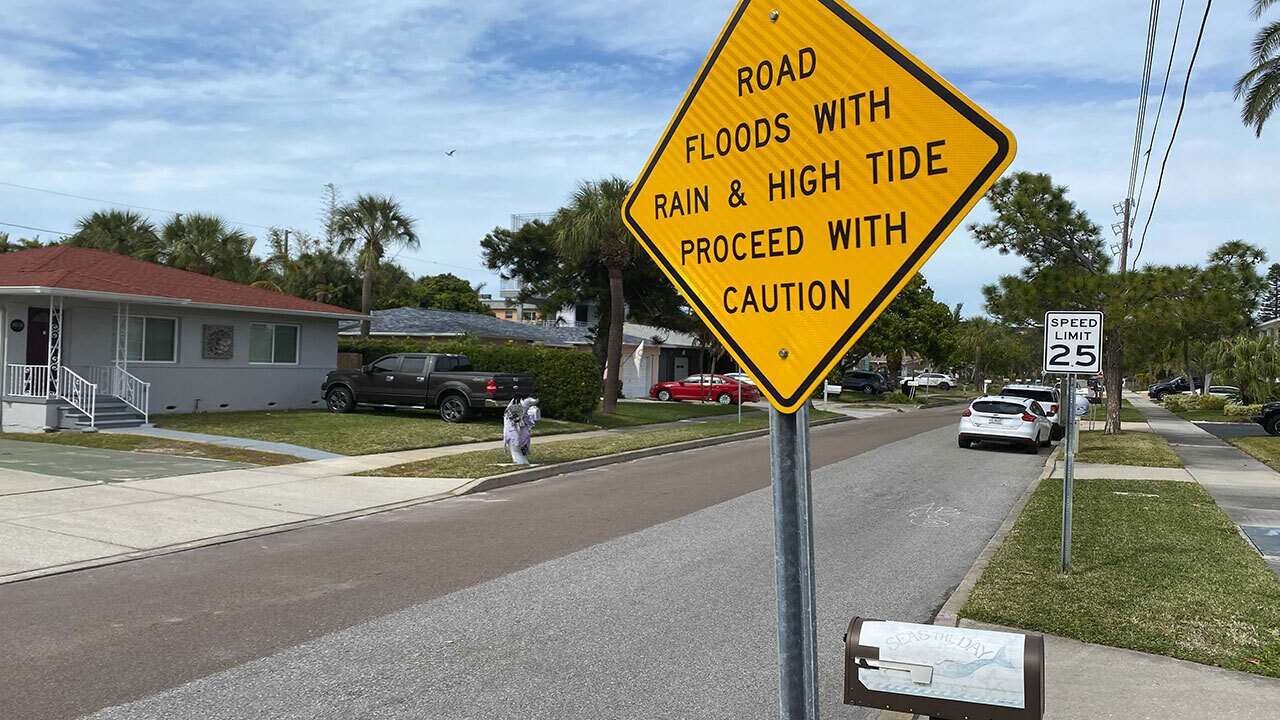TAMPA, Fla. — An interagency sea level rise task force that includes NASA, NOAA, and other federal agencies said Tuesday the ocean height is projected to rise by up to a foot over the next 30 years.
The report, titled Global and Regional Sea Level Rise Scenarios for the United States, included the near-term projections for the next 30 years for the first time.
According to NASA, the task force put together the sea level projections by "drawing on an improved understanding of how the processes that contribute to rising seas - such as melting glaciers and ice sheets as well as complex interactions between ocean, land, and ice - will affect ocean height."
“This report supports previous studies and confirms what we have long known: Sea levels are continuing to rise at an alarming rate, endangering communities around the world. Science is indisputable and urgent action is required to mitigate a climate crisis that is well underway,” said NASA Administrator Bill Nelson in a statement.
The report included an online mapping tool that allows users to see the impact of sea level rise on specific areas across multiple scenarios through the year 2150.
Using the map, the task force found St. Petersburg could see the sea level rise between 10.9 inches to 20.04 inches by 2050, depending on the level of scenario selected. That would be among the highest levels of sea-level rise forecast in the state of Florida for 2050. Pushing it out to 2150 sets sea levels from between 27 inches and 149 inches for the St. Petersburg/Clearwater area.
“This is a global wake-up call and gives Americans the information needed to act now to best position ourselves for the future,” said NOAA Administrator Rick Spinrad, Ph.D.
ABC Action News wanted to better understand how the new report findings will impact the Tampa Bay area, so we connected with the Public Works Director of Pinellas County and a USF Marine Science Professor.
Both Kelli Hammer Levy (director of Pinellas County's Public Works sector) and Gary Mitchum (Professor and Associate Dean of the USF College of Marine Science) believe the #1 takeaway from this report is that communities need to speed up flood prevention projects and prioritize them.
Valve projects are popping up across the Tampa Bay area. In St. Pete Beach's Don Cesar/Maritana neighborhood, crews are installing tide flex valves into the seawalls and stormwater drainage locations to prevent bay flooding into neighborhoods. Tarpon Springs recently completed a similar project near the sponge docks.

In Tampa, culverts have been added in flood-prone areas like Rome Avenue to carry excess water out to the bay.
Pinellas County is also more careful than ever about which future projects they give the green light. “If it’s a project over a million dollars you have to do a sea-level rise and storm surge evaluation and it’s just critical we look at that as early on as possible to make sure if a storm comes through that bridge is still standing or that road is still there," Hammer-Levy explained.
“Alarming is what some people might say about the NOAA findings, but we knew this was coming and I think the fact that we have all this information out there is really a good thing," added Gary Mitchum.
Experts also stress doing what we can to protect our own homes, like elevating the entire house or at least putting essential items above ground level.
“This isn’t a doomsday message. This is about learning about the situation and making those adaptations that you can," Hammer-Levy added.
State leaders are also allocating more than $200 million dollars towards community-level flood fixes.
They’re projects that Pinellas County residents like Neil Russo desperately hopes will help. Russo lives in a perfectly situated neighborhood. He’s just a block from the Don Cesar Hotel in St. Pete Beach, which means his home is straddled between the beach and bay.
Yet, a sign warning of flooding during rain and high tide that's posted in his neighborhood alludes to a major issue in the picture-perfect location.

"You wake up and there’s water in the road for no reason," Russo stated.
Even on a sunny day, high tides can turn his street into a river. Russo says he’s lost count of how many times his street has flooded in the 6 years he’s been here but says he's lucky he hasn't had water in his house.
NOAA’s new sea-level rise report shows high tide flooding like the kind in his St. Pete Beach neighborhood will happen 10 times more often by 2050.
“It’s very stressful. Very stressful and then try to get flood insurance and when you can, what are they covering and what’s it cost? It's crazy,” Russo added.
Russo hopes the recent valve project added to his neighborhood will help.
The NOAA task force on Tuesday also projected an uptick in the frequency and intensity of high-tide coastal flooding and noted that if greenhouse gas emission continues to increase, "global temperatures will become even greater, leading to a greater likelihood that sea-level rise by the end of the century will exceed projections in the 2022 update."
You can read the full report below:





